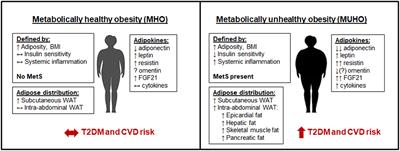As we go about our daily lives, many of us may not be aware of the different types of fat in our bodies. Adipose tissue and visceral fat are two terms that are often associated with body fat. Let’s take a closer look at what they are and how they differ.
What is Adipose Tissue?
Adipose tissue, also known as body fat, is a type of connective tissue made up of fat cells. It serves as a storage space for energy in the form of triglycerides. Adipose tissue can be found throughout the body, including under the skin (subcutaneous fat), around organs (visceral fat), and between muscles (intramuscular fat). Its primary function is to cushion and protect the organs, regulate body temperature, and provide a source of energy.
Understanding Visceral Fat
Visceral fat, on the other hand, is a specific type of adipose tissue that surrounds the internal organs in the abdominal cavity. Unlike subcutaneous fat, which is located just beneath the skin, visceral fat is deeper within the body. High levels of visceral fat have been linked to various health issues, including heart disease, type 2 diabetes, and certain types of cancer. This type of fat is metabolically active and can release inflammatory substances that can affect the body’s overall health.
It’s important to note that not all fat is bad. Some amount of body fat is necessary for insulation, protection, and energy storage. However, excess visceral fat can have detrimental effects on health. Adopting a healthy lifestyle, including regular exercise, a balanced diet, and stress management, can help maintain a healthy body fat distribution and reduce the accumulation of visceral fat.

Characteristics and Functions
Properties of Adipose Tissue
Adipose tissue, also known as body fat, plays a crucial role in our bodies. It is composed of adipocytes, which store fat for energy and provide insulation and protection to organs. Additionally, adipose tissue acts as an endocrine organ, releasing hormones that regulate metabolism, appetite, and inflammation.
This type of tissue can be classified into two categories: white adipose tissue (WAT) and brown adipose tissue (BAT). WAT is the most common and is responsible for storing excess energy. It is found throughout the body, forming a layer beneath the skin (subcutaneous fat) and around internal organs (visceral fat). On the other hand, BAT is involved in thermogenesis, generating heat and burning calories.
Role of Visceral Fat in the Body
Visceral fat, specifically, is located deep within the abdominal cavity, enveloping vital organs such as the liver, pancreas, and intestines. Unlike subcutaneous fat, which is found just beneath the skin, visceral fat is metabolically active and releases various substances, including hormones, cytokines, and fatty acids.
While some level of visceral fat is necessary for normal bodily functions, excessive amounts can pose health risks. Research has linked excess visceral fat to an increased risk of chronic conditions such as cardiovascular disease, type 2 diabetes, and certain types of cancer.
It is important to note that a healthy lifestyle, including regular exercise and a balanced diet, can help reduce visceral fat levels. By adopting these habits, one can promote overall health and decrease the risk of associated diseases.

Health Implications
Health Risks of Excessive Adipose Tissue
Excessive adipose tissue, also known as body fat, can pose significant health risks. When the body accumulates more fat than it needs, it can lead to obesity, which is associated with various health conditions. These may include heart disease, diabetes, high blood pressure, stroke, and certain types of cancer. Carrying excess weight can also put strain on the joints and lead to musculoskeletal problems like arthritis.
Impact of Visceral Fat on Health
Visceral fat specifically refers to the fat that surrounds the organs in the abdominal cavity. This type of fat is metabolically active and can produce hormones and chemicals that contribute to inflammation and insulin resistance. Excess visceral fat is strongly associated with an increased risk of developing chronic conditions such as type 2 diabetes, cardiovascular disease, and certain cancers.
While both adipose tissue and visceral fat can have negative impacts on health, it’s important to note that not all body fat is created equal. Subcutaneous fat, which is found just beneath the skin, and adipose tissue in general, serve important functions such as insulation and energy storage. However, excess body fat, especially visceral fat, can significantly increase the risk of various health issues.
Therefore, maintaining a healthy weight through a balanced diet and regular exercise is crucial for reducing the risks associated with excessive adipose tissue and visceral fat.

Measurement and Assessment
Methods to Measure Adipose Tissue
When it comes to assessing adipose tissue, commonly known as body fat, there are several methods available. Some of the most common techniques include:
- Skinfold Thickness: This method involves using calipers to measure the thickness of the skin and underlying fat at different sites on the body.
- Dual-energy X-ray absorptiometry (DXA): DXA is a medical imaging technique that provides a detailed analysis of body composition, including fat mass and distribution.
- Bioelectrical Impedance Analysis (BIA): BIA measures the electrical impedance of body tissues to estimate body fat percentage.
Evaluating Visceral Fat Levels
Visceral fat, also known as abdominal fat or belly fat, is the fat stored deep in the abdominal cavity. To assess the level of visceral fat in the body, the following methods are commonly used:
- Waist Circumference: Measuring the circumference of the waist at the level of the belly button can provide an estimate of visceral fat accumulation.
- Computed Tomography (CT) Scan: CT scan can provide a more precise measurement of visceral fat by visualizing and quantifying the fat within the abdominal cavity.
- Magnetic Resonance Imaging (MRI): Similar to CT scan, MRI is another imaging technique that can accurately measure visceral fat volume.
It is important to note that both adipose tissue and visceral fat play a role in overall health. Too much visceral fat is associated with an increased risk of chronic diseases, such as type 2 diabetes and cardiovascular disease. Regular monitoring of body fat levels can help individuals make informed decisions about their health and take appropriate steps to maintain a healthy weight.

Managing and Reducing
Tips for Managing Adipose Tissue
Adipose tissue, commonly known as body fat, plays essential roles in insulation, energy storage, and hormone regulation. However, excessive adipose tissue can lead to health issues. Here are some tips to manage your adipose tissue levels:
- Healthy Eating: Focus on a balanced diet that includes fruits, vegetables, lean proteins, and whole grains. Avoid excessive consumption of processed and sugary foods that can contribute to weight gain.
- Regular Exercise: Engage in physical activities for at least 30 minutes a day, five days a week. Incorporate a combination of cardiovascular exercises, strength training, and flexibility exercises to help maintain a healthy body composition.
- Portion Control: Be mindful of portion sizes to avoid overeating. Listen to your body’s hunger and fullness cues and stop eating when you feel satisfied rather than overly full.
Strategies to Reduce Visceral Fat
Visceral fat refers to the fat that surrounds the internal organs and is associated with an increased risk of various health conditions. Here are some strategies to help reduce visceral fat:
- Aerobic Exercise: Engage in activities such as brisk walking, running, cycling, or swimming to burn calories and reduce overall body fat, including visceral fat.
- Strength Training: Incorporate strength training exercises into your routine to increase muscle mass. Having more muscle can help boost your metabolism and promote fat burning.
- Healthy Diet: Focus on a nutrient-dense diet that includes plenty of fruits, vegetables, lean proteins, whole grains, and healthy fats. Avoid or limit processed foods, sugary beverages, and high-fat foods.
Remember, adopting a healthy lifestyle with regular exercise and a balanced diet is key to managing adipose tissue levels and reducing visceral fat.

Conclusion
In summary, understanding the differences between adipose tissue and visceral fat is crucial for maintaining a healthy lifestyle. Adipose tissue is the collective term for the body’s fat storage, while visceral fat refers specifically to fat stored around vital organs. By managing these fat deposits, individuals can reduce the risk of various health conditions such as heart disease, diabetes, and stroke.
Differences between Adipose Tissue and Visceral Fat
Location: Adipose tissue is found throughout the body and serves as energy storage, insulation, and protection. Visceral fat, on the other hand, accumulates around the abdominal area, surrounding vital organs.
Health Implications: Adipose tissue in moderate amounts is essential for normal bodily functions. However, excess visceral fat can lead to metabolic disorders, insulin resistance, and inflammation, increasing the risk of chronic diseases.
Appearance: Adipose tissue can be subcutaneous (located under the skin) or visceral. Visceral fat is less visible on the surface and is often described as a “beer belly” or “potbelly.”
Summary of Key Points
- Adipose tissue is the general term for fat storage in the body, while visceral fat refers to fat specifically around vital organs in the abdominal area.
- Managing fat deposits is important for reducing the risk of diseases such as heart disease, diabetes, and stroke.
- Visceral fat is associated with metabolic disorders, insulin resistance, and inflammation.
- Adipose tissue can be subcutaneous (under the skin) or visceral, while visceral fat is less visible on the surface.
Overall, it is crucial to maintain a healthy balance of adipose tissue and reduce visceral fat through regular exercise, a balanced diet, and lifestyle changes.






